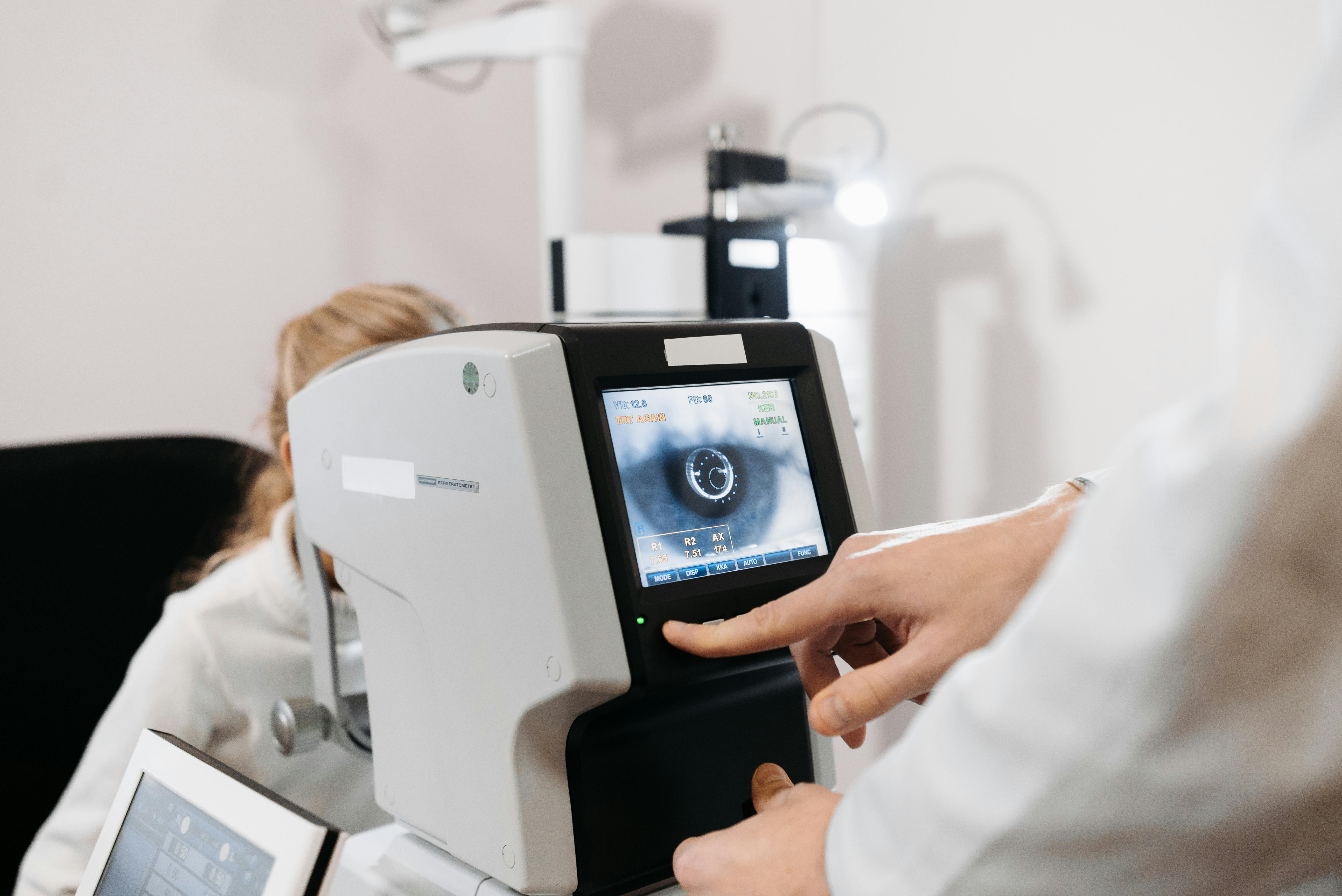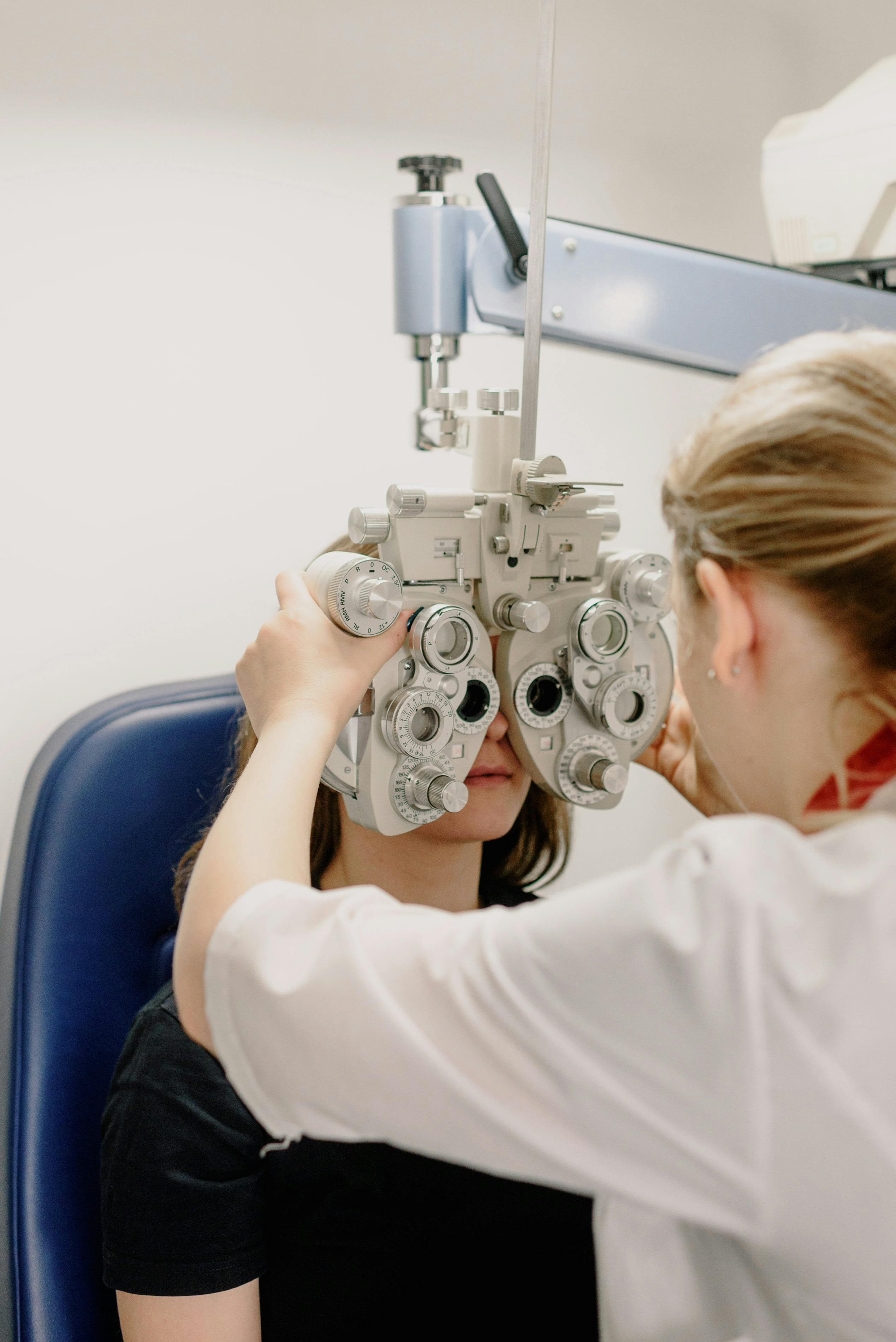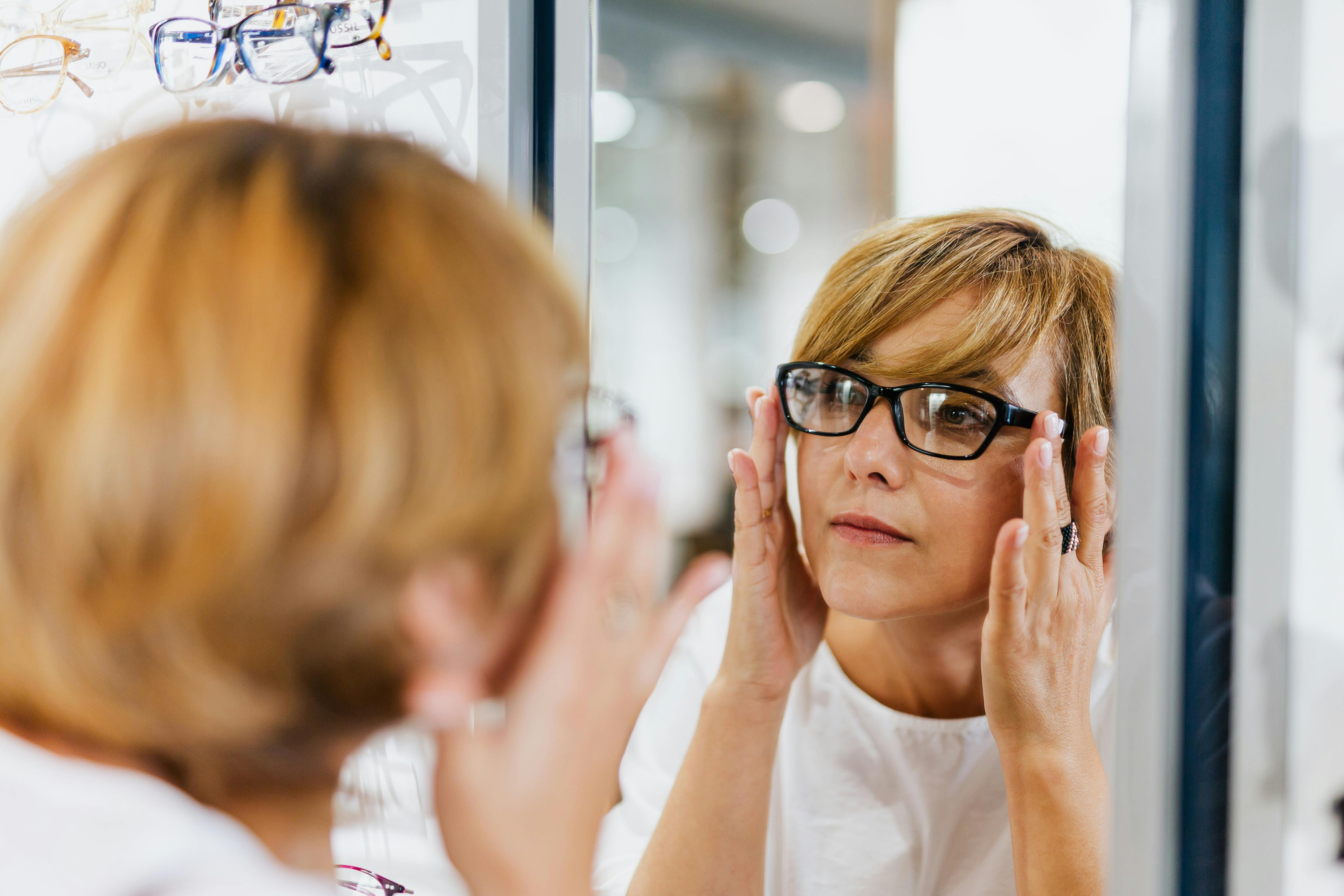First Things First: A Warm Welcome
When you arrive at our office in Geneva, IL, you'll be greeted by our friendly team. We'll ask you to fill out some basic paperwork about your medical and vision history, any medications you’re taking, and if you’re having any vision concerns. We want to get to know you, not just your eyes, so don’t be shy about sharing how you’ve been seeing or feeling!

Step 1: Pre-Testing
- Autorefraction – Gives us a starting point for your glasses prescription
- Meibography – Takes a picture of your meibomian glands, which are needed to help keep your eyes from becoming too dry
- Retinal photos or scans – Gives us a picture of the inside of your eye, which helps detect things like diabetes, high blood pressure, or early signs of eye disease

Step 2: The Doctor’s Exam
Next, you’ll meet with our optometrist. This part of the visit is relaxed, conversational, and tailored to your needs. Here’s what usually happens:
Visual Acuity Test – You’ll read letters on a chart to check how clearly you can see at various distances. This is the classic "Which is better, 1 or 2?" test!
Entrance Testing – These include various tests that help us check your eye alignment, peripheral vision, eye movements, depth perception, color vision, and pupils
Intraocular Pressure – Don’t worry, no air puff here! We use a machine called the iCare tonometer, which feels like it is tickling your eyelashes.
Eye Health Check – Using a small light and magnifying lenses, the doctor will look at the front and back of your eyes, checking for signs of cataracts, macular degeneration, dry eyes, or other conditions.
Refraction – If you wear glasses or contacts, or need them for the first time, we’ll refine your prescription to ensure your vision is as sharp and comfortable as possible.
Optional: Dilation – We may recommend dilating your pupils with drops to get a better view inside your eyes. It’s painless, but your vision may be blurry and sensitive to light for a few hours afterward.
Step 3: Review and Recommendations
At the end of your exam, we’ll explain everything we found in clear, simple terms, no confusing jargon! Whether your eyes are perfectly healthy or need a little support (like glasses, eye drops, or follow-ups), we’ll walk you through all your options. Have questions? This is the time to ask away! We love helping patients understand their eye health!

Step 4: Eyewear (If You Need It)
If you need glasses, our optical team will help you pick out the perfect pair. We offer a wide selection of stylish frames for all ages and budgets. Our goal? To make sure you are a Sight To See.
Why Eye Exams Matter
Even if you think you’re seeing just fine, regular eye exams are essential for catching issues early, often before you notice any symptoms. Eye exams can even reveal signs of underlying health problems like diabetes, high blood pressure, and more. Still have questions? Give us a call, we’re happy to help. We’ll see you soon and help you See The Difference, with Sight To See Eyecare & Eyewear






